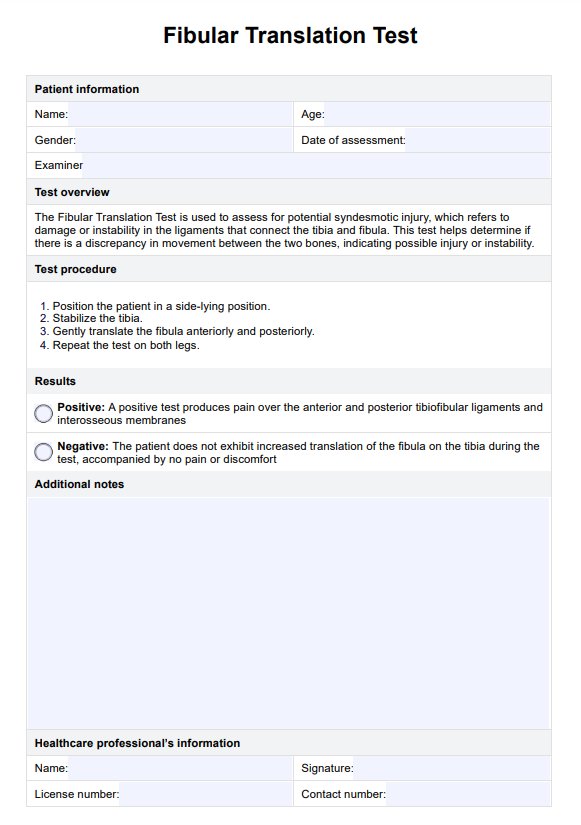Testing for a fibula fracture involves a clinical examination and imaging tests. A healthcare professional will assess for tenderness, swelling, or deformity along the fibula. If pain occurs during palpation or weight-bearing, it may indicate a fracture. X-rays or MRIs are typically used to confirm the diagnosis and determine the severity of the fracture.

Fibular Translation Test
Evaluate syndesmosis injuries accurately with the Fibular Translation Test, a diagnostic assessment for ankle sprains and pain management in healthcare.
Fibular Translation Test Template
Commonly asked questions
The Fibular Translation Test assesses ankle injuries, specifically syndesmosis injuries, which involve the ligaments connecting the tibia and fibula. It involves translating the fibula anteriorly and posteriorly while stabilizing the tibia, comparing both legs for pain or increased movement, which may suggest ligament damage or instability.
The Fibular Translation Testhas a sensitivity of 75% and a specificity of 88%, according to Beumer et al. (2011). This means the test accurately identifies syndesmosis injuries in 75% of cases and correctly rules out the condition in 88% of cases, making it a reliable tool when combined with other assessments.
EHR and practice management software
Get started for free
*No credit card required
Free
$0/usd
Unlimited clients
Telehealth
1GB of storage
Client portal text
Automated billing and online payments











